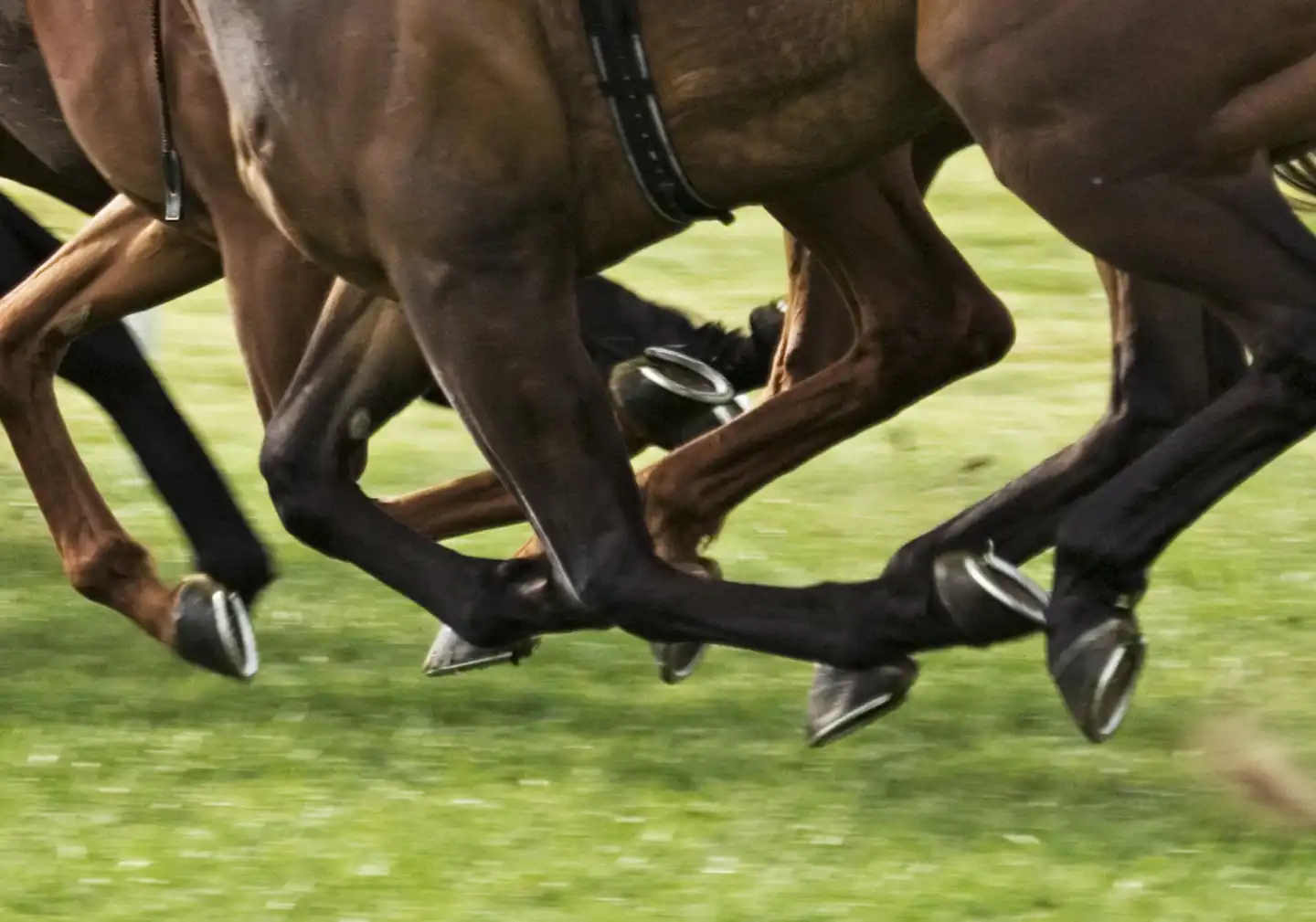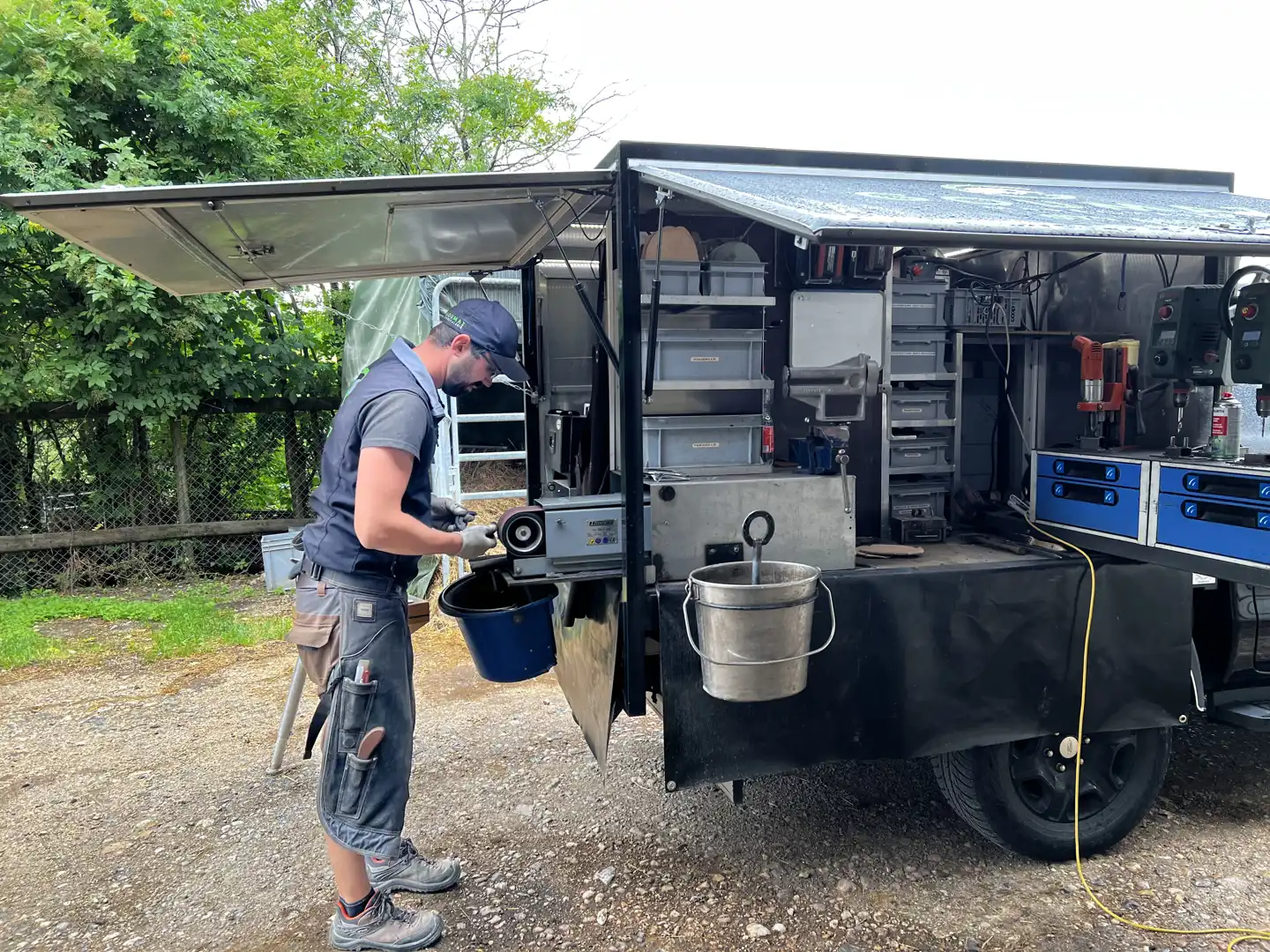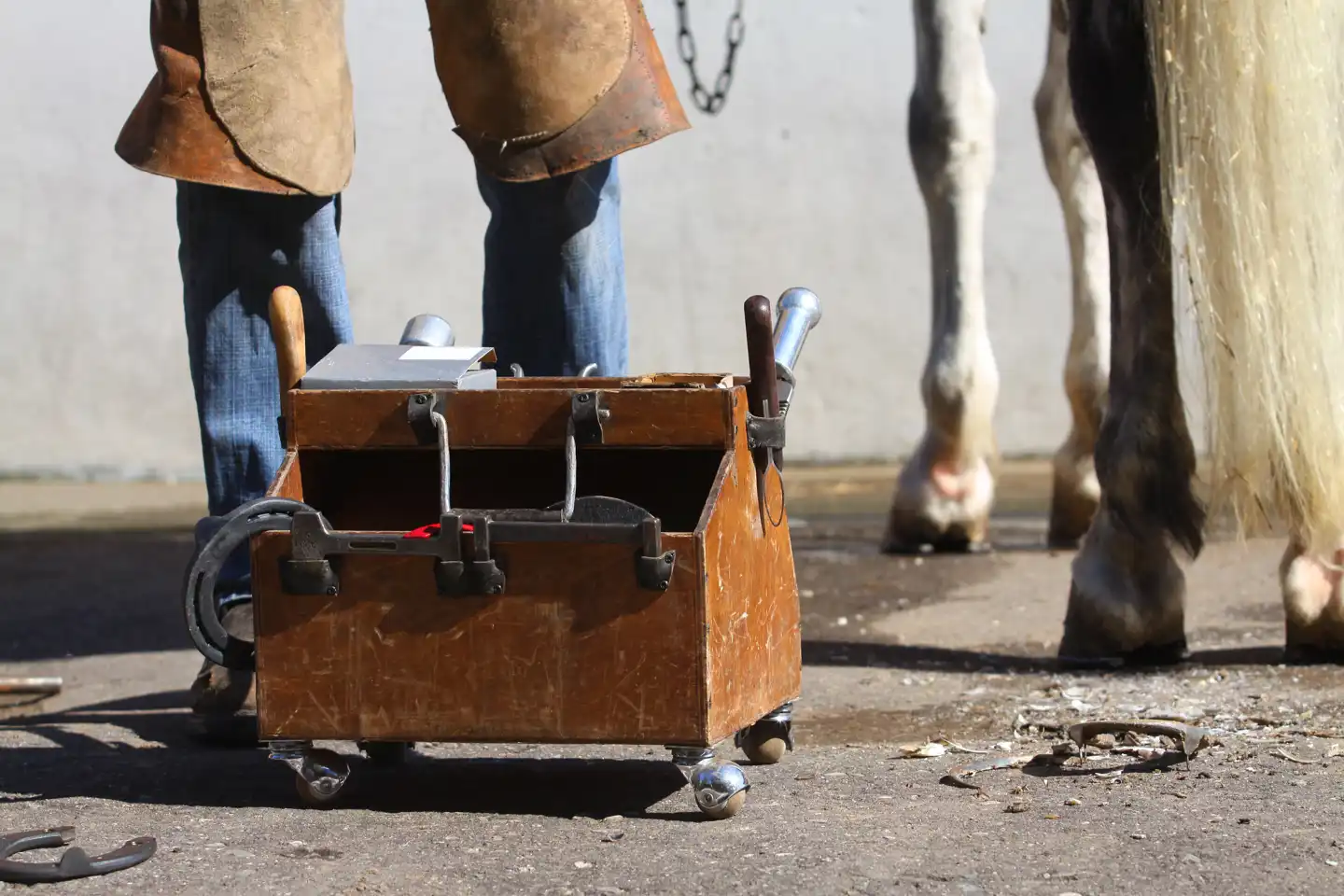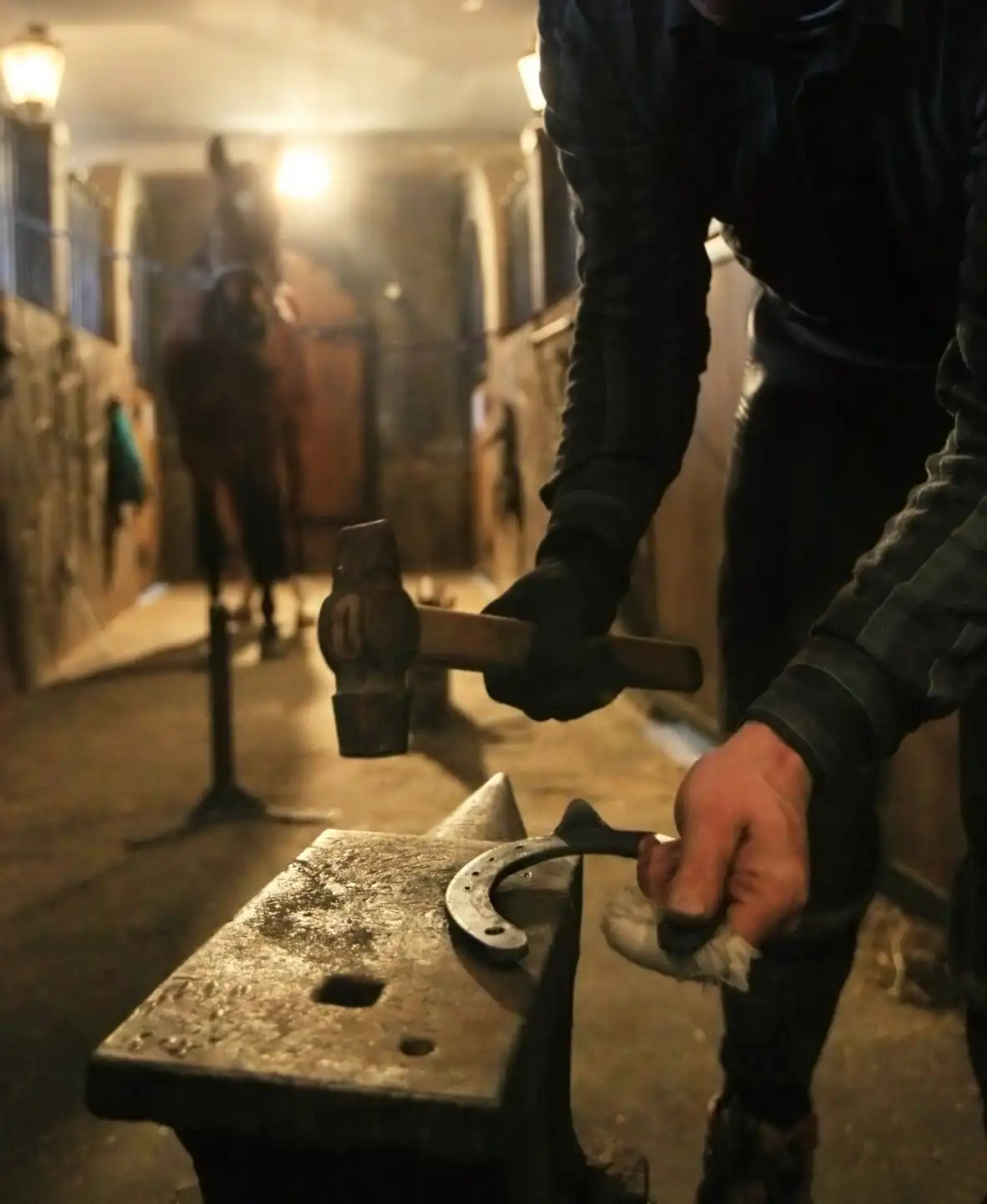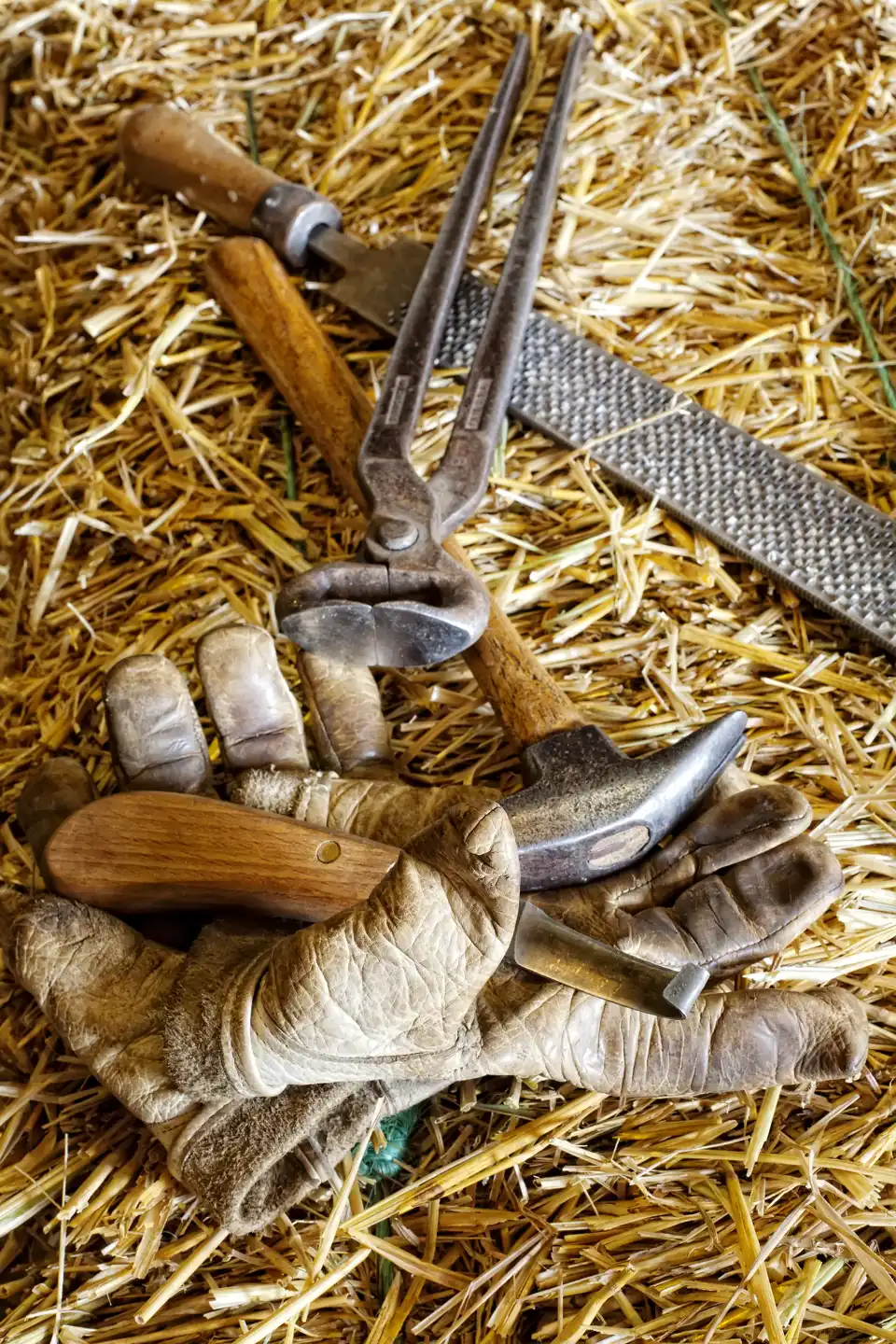Discover the art of shoeing with an experienced farrier
The farrier's profession, an art dating back thousands of years
The blacksmith profession is much more than just a skilled trade; it is an art that dates back thousands of years, dedicated to the health and performance of horses. Farriers play a critical role in ensuring the well-being of horses through expert shoeing techniques.
A technical knowledge
A trained blacksmith excels at evaluating horses' feet and determining exactly what type of shoeing is needed. With his extensive technical knowledge, he custom-fits and modifies horseshoes to ensure a perfect fit for each animal.
Anatomical adaptability
The work is not limited to shoeing, but is in the base the barefoot care. One usually has not only horses, but also sometimes ponies or donkeys. With a lot of experience and luck you could also treat and care for exotic animals, if there are contacts to zoos. Then it can also be that one treats a zebra, a wild wasteland, an okapi or even a rhinoceros or a giraffe on the feet.
Besides, every horse is unique, and that's where the farrier's art lies. By understanding the anatomical differences, he professionally adapts his work to optimize the comfort and performance of each horse. This personalized attention helps prevent health problems associated with horses' feet.
Patience and accuracy
Patience is an essential virtue in the profession. Every step, from the initial assessment to the final application of the horseshoes, requires the utmost precision. This profession requires a unique combination of craftsmanship and in-depth knowledge of the unique needs of each horse.
It is a demanding and rewarding profession that requires a high degree of accuracy. It also requires a good eye and an extensive knowledge of equines.
The different steps of shoeing
The shoeing of a horse is a careful process that involves several steps to ensure the comfort and health of the equine. Here are the main steps of shoeing:
- Initial assessment: the professional first examines the horse's hooves. He assesses the overall health of the hooves, the way the horse moves, and he considers any existing medical conditions.
- Hoof cleaning: Before shoeing begins, the horse's hooves are thoroughly cleaned of dirt, stones and other foreign material.
- Trimming: The farrier works the hooves, which means trimming away excess horn and shaping the hooves to the proper shape. This helps maintain balance and prevent potential problems.
- Measure: Depending on the hoof size and morphology of the horse, the farrier will measure and select the appropriate horseshoes. Horses require special irons depending on their activity, e.g. racing or trotting irons, cold blood irons or orthopaedic horseshoes.
- Forging: The farrier must reshape the horseshoes by forging them to fit the specific shape of the hooves.
- Fitting: The horseshoes are then fitted to the horse's hooves. He will make sure they are properly positioned for optimal balance.
- Fastening: The horseshoes are attached to the hooves with special nails. The blacksmith makes sure the nails are driven accurately and correctly to ensure stability.
- Finishing: Once the horseshoes are attached, the expert can make final adjustments to ensure a good fit and comfortable gait for the horse.
- Advice and follow-up: The farrier can give the horse owner advice on hoof care, recommended frequency of shoeing, and any other aspects that are important to the health of the horse's hooves.
Because each horse is unique, these steps may vary slightly depending on the specific needs of the animal. Regular care by a professional is essential to maintaining the health of the horse's hooves.
Good advice for a nutritional supplement such as Birk Super Feet is adding value to the quality of the hooves.
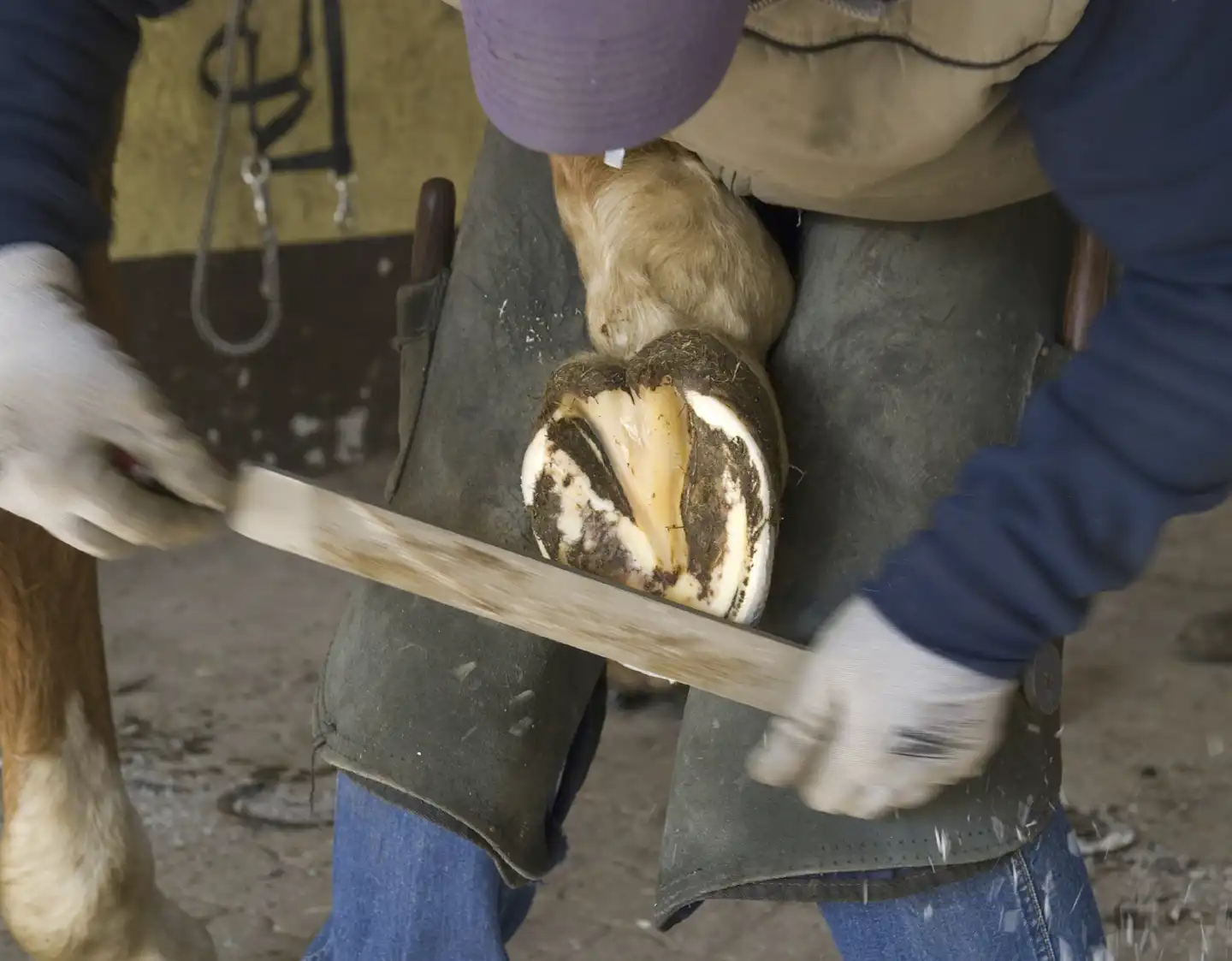
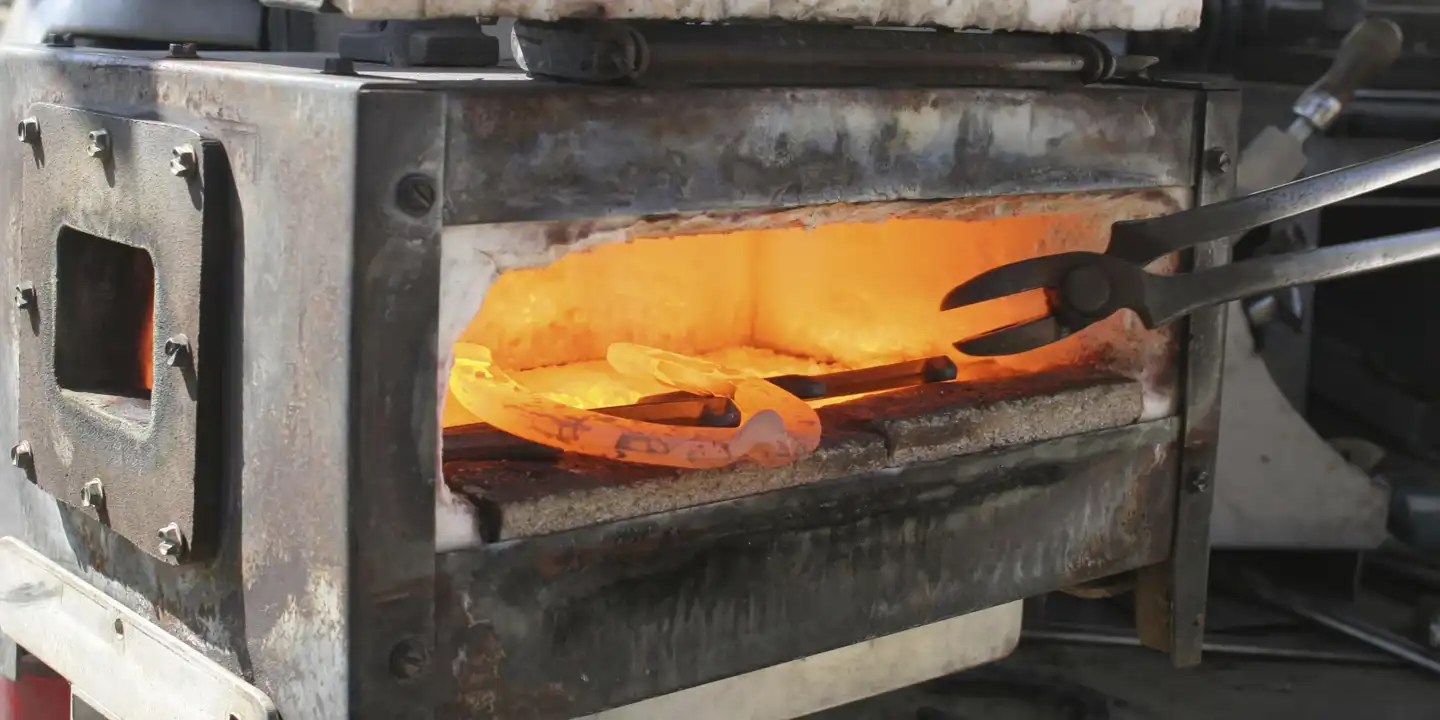
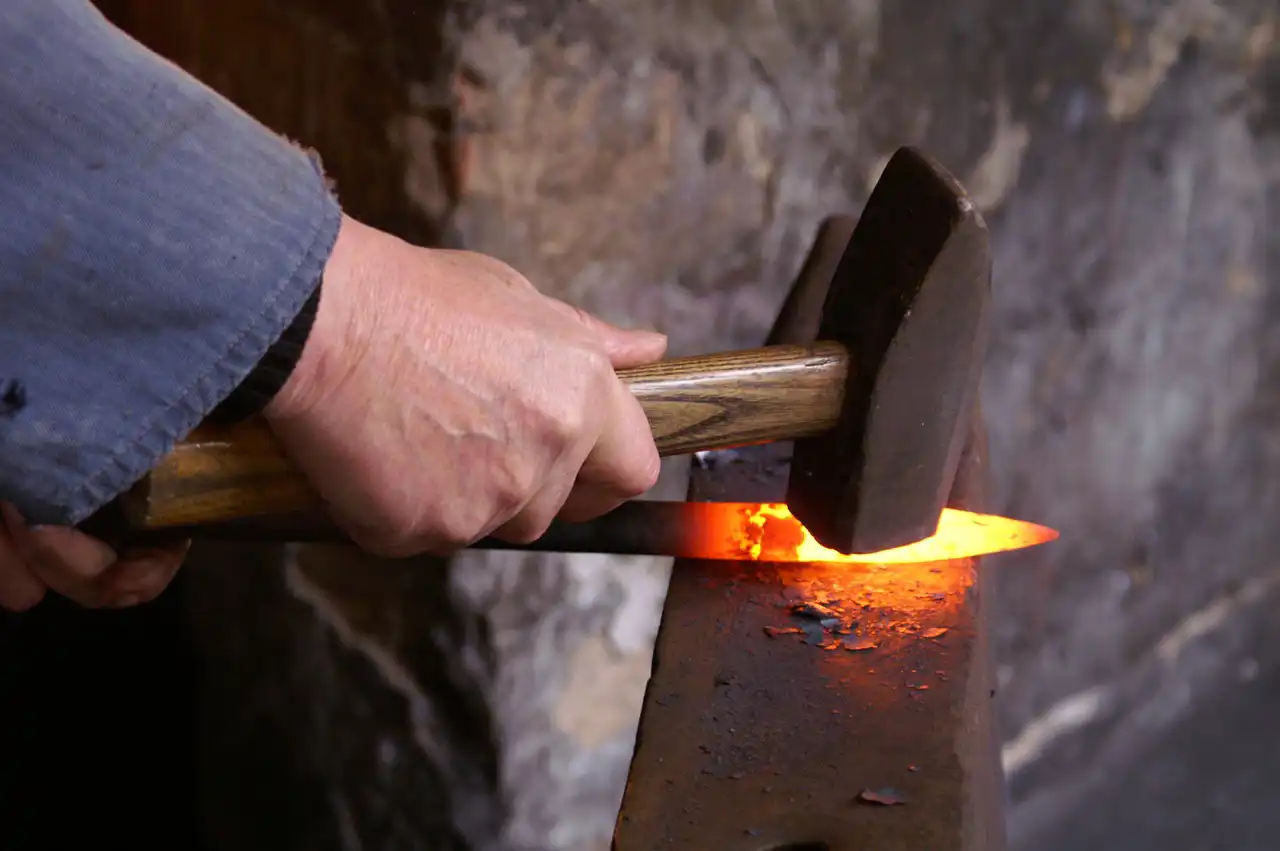
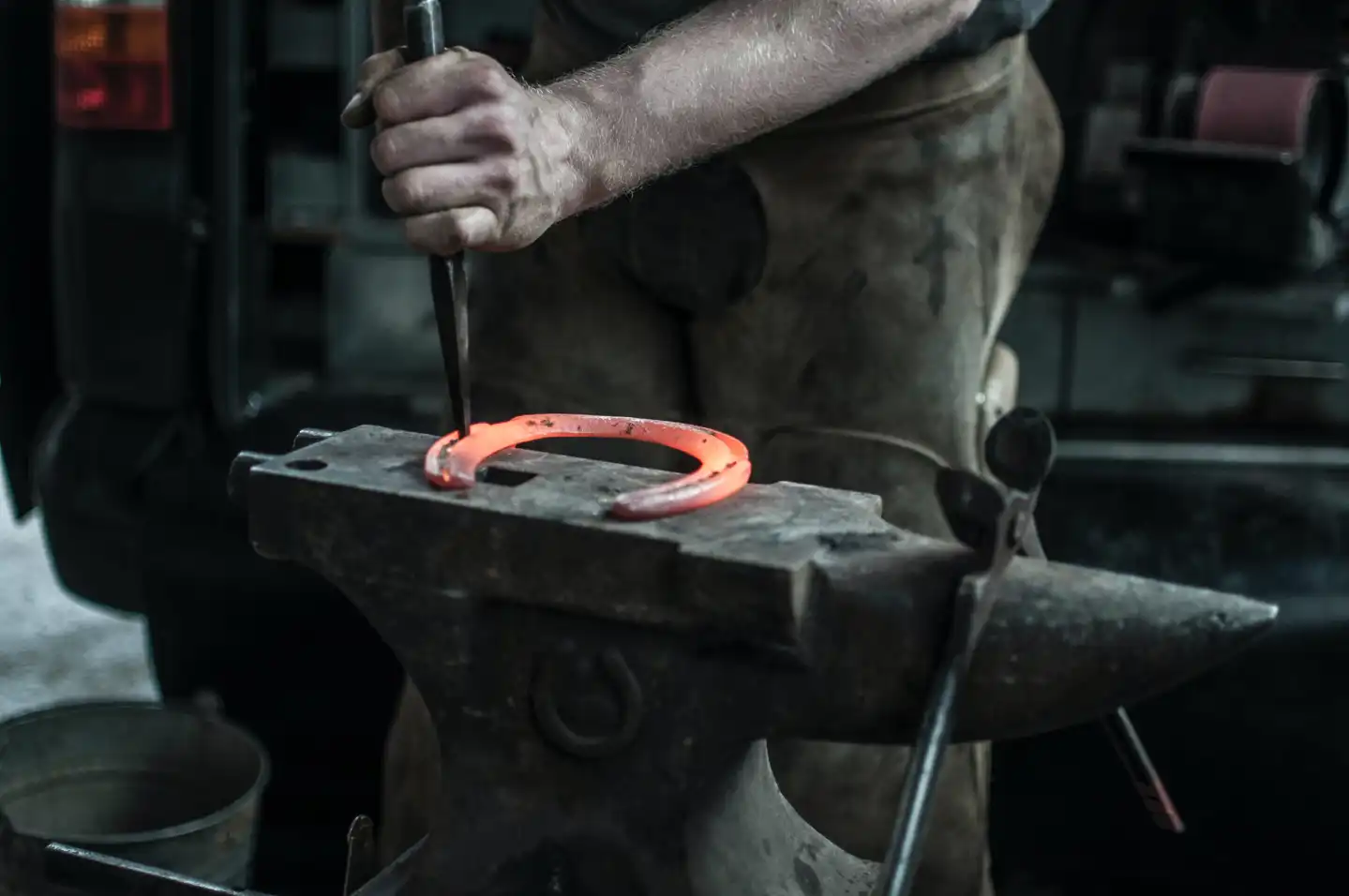
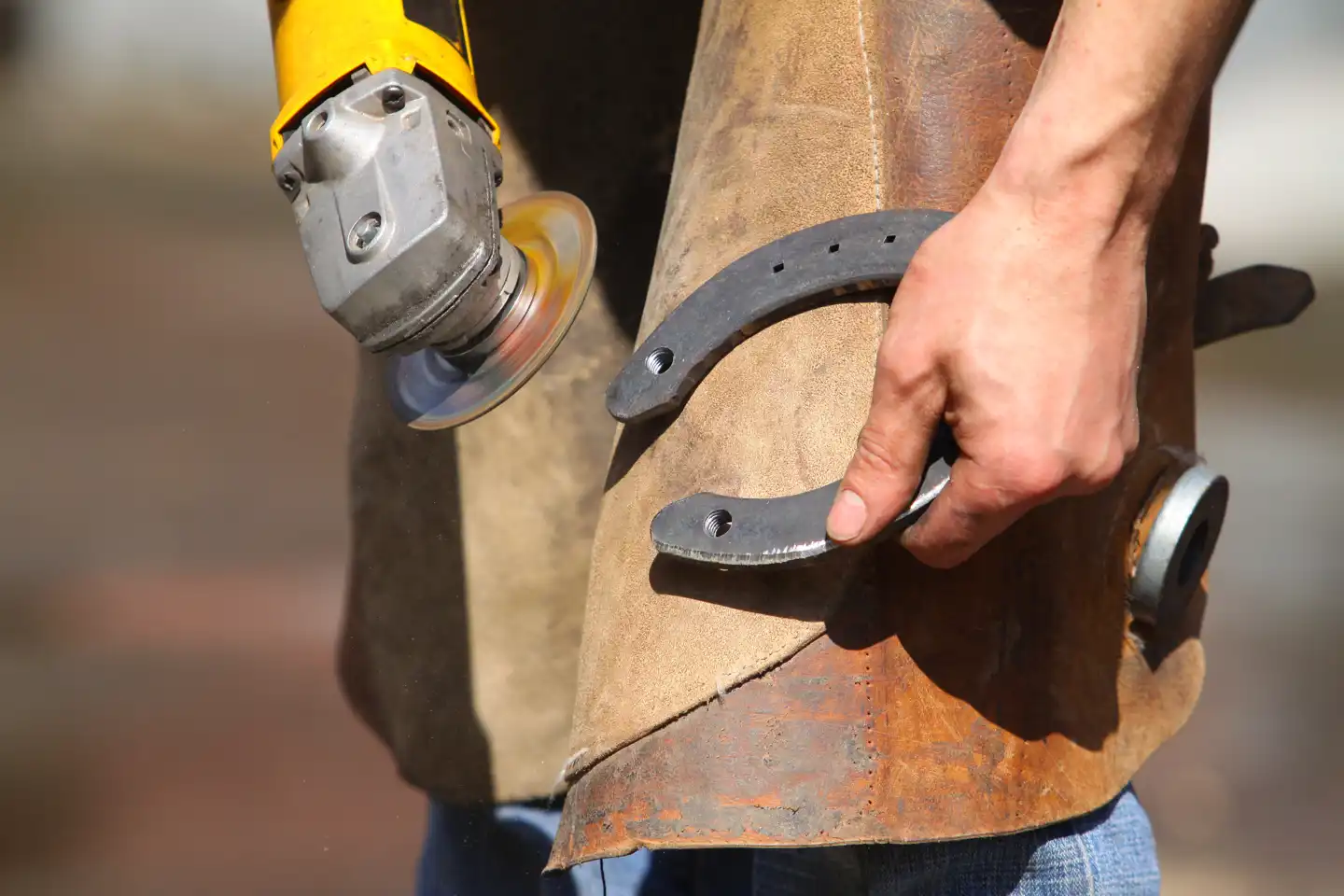
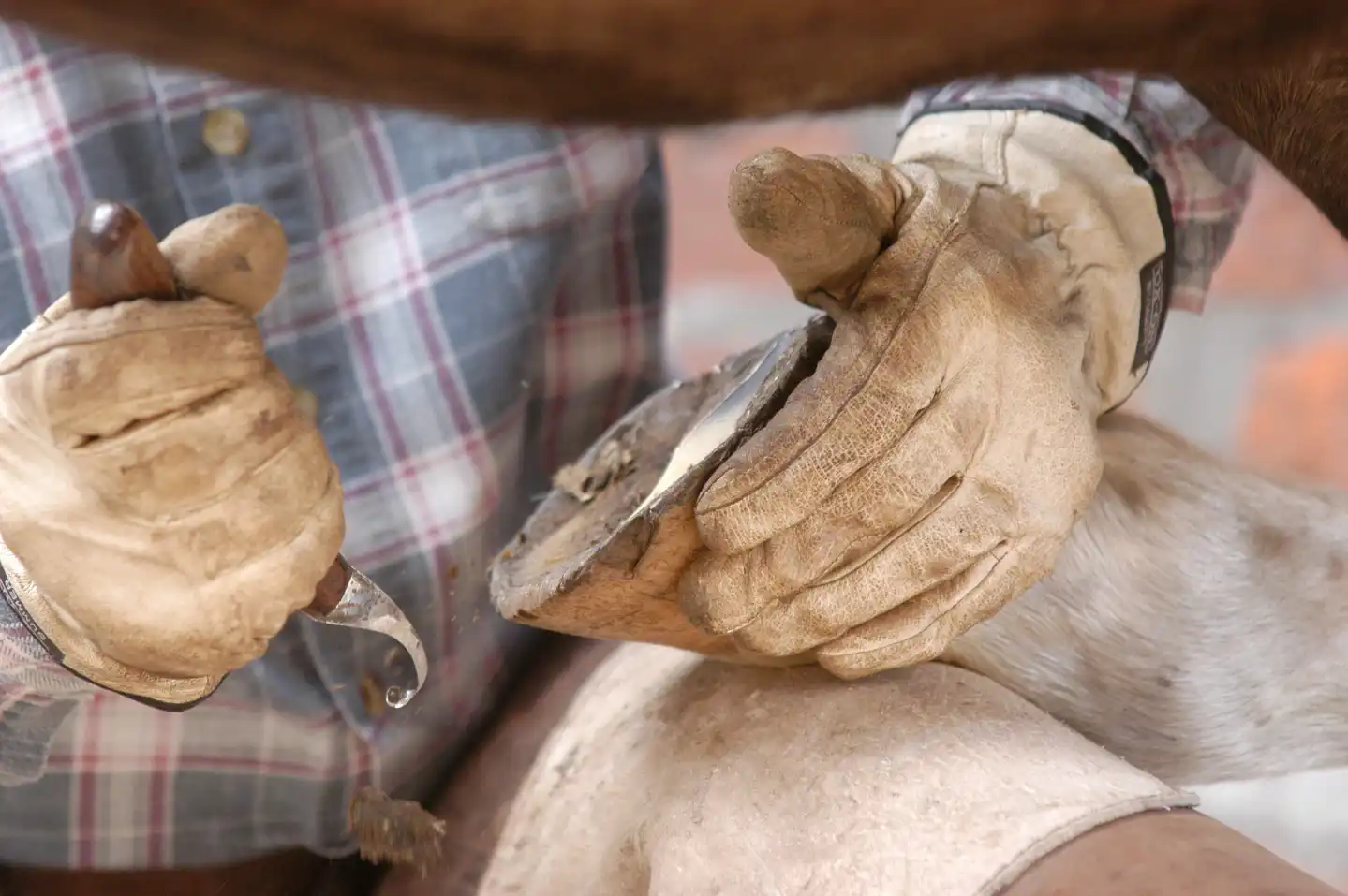
Mobility
In the past, he often worked in a blacksmith's shop or special workshops. These places were equipped with fire, anvil and other tools needed for the manufacture and fitting of horseshoes. Stables and barns were also common places where farriers pursued their profession.
Today they are often traveling craftsmen, frequently moving from farm to farm to offer their services to horse owners. They visit stables to examine horses' feet, recommend appropriate shoes, and perform the shoeing on the spot. This mobility is necessary because horses are used for sport, recreation, carriage driving, and farm work, and the professional’s services are essential to maintaining the health of the animals.
Thus, they travels to the customers with a vehicle, the "mobile workshop", in which there is an impressive collection of equipment, such as a belt grinder, an anvil, a gas forge, drills and all other equipment that can be purchased at ET-Hoofcare.
There are also some farriers collaborating closely with an equine clinic where horses are taken for hoof work with the use of X-ray equipment.
What else is a farrier?
It is a skilled craftsman and practical thinker. When he has routine, he works in an energy-saving, structured and fast way.
If something is wrong with the horse, the hoof, the gait of the horse, he takes the time to investigate the cause and find a solution.
He must have an interest in animals. He should be physically fit above average. He should value craftmanship and materials such as fire, metal, tools.
Fear of blisters on hands, dirty fingers and clothing should not be an objection.
A profession of passion
Being a farrier means developing a passion for horses and their well-being. It is a profession where traditional craftsmanship meets modern science to create harmony between the animal and its hooves.
Training to become a farrier
Where can you obtain training in Switzerland?
In Switzerland, training usually follows a specific path that combines theoretical and practical aspects. Here is a general description of the training to become a farrier in Switzerland:
- Apprenticeship: The training takes the form of a four-year basic training program leading to a Swiss Federal Certificate of Proficiency EFZ (apprenticeship). People interested in becoming a farrier can search for apprenticeships (teaching opportunities) with experienced farrier trainers. Well-known apprenticeship platforms such as berufsberatung.ch or yousty.ch list open apprenticeship positions. The farrier apprenticeship can also be completed as an additional apprenticeship. Depending on previous professional knowledge, the apprenticeship period can be shortened.
- Theoretical Classes: Parallel to the training in the company, the apprentices attend the vocational school in Olten one day per week. This theoretical instruction is divided into the subject areas of hippology (equine science), operational and technical basics, and farriery.
Practical Training: Practical learning is the focus of the training. Trainees work directly with horses, learning to assess their hooves, care for them and shoe them. Blacksmithing is also an important skill acquired during this time.
Examinations: At the end of the training, the apprentices take a theoretical and practical exam to prove their skills and knowledge. These exams are organized and conducted by the professional association of farriers, Farriertec Suisse.
- Certification: Successful completion of the examination leads to an EFZ (Federal Certificate of Proficiency). The professional qualification has been accredited by the EFFA (European Federation of Farriers Associations) and a certificate as Euro Farrier is issued.
If you want to become a farrier in Switzerland, you can find the necessary documents for training on the site of the professional association Farriertec Suisse. If you have any questions, use the contact details and ask.
For more information, visit the following websites:
https://www.werdehufschmied.ch/
Lehrberufe Live (lehrberufe-live.ch)
https://www.farriertecsuisse.ch/de/bildung/grundbildung/hufschmiedin
What happens after the apprenticeship?
After a 4-year apprenticeship, it would be advisable to work for a few years with experienced professionals. As a blacksmith in general, you can find work anywhere in the world. Once you have gained experience, it is possible to start your own business and work independently. In Switzerland, you can continue your education as an orthopaedic farrier or obtain higher qualifications abroad.
It is possible to build a network of colleagues and veterinarians and thus expand knowledge, clientele and reputation.


